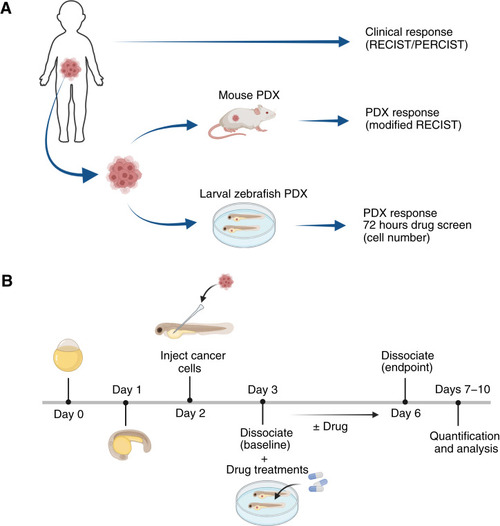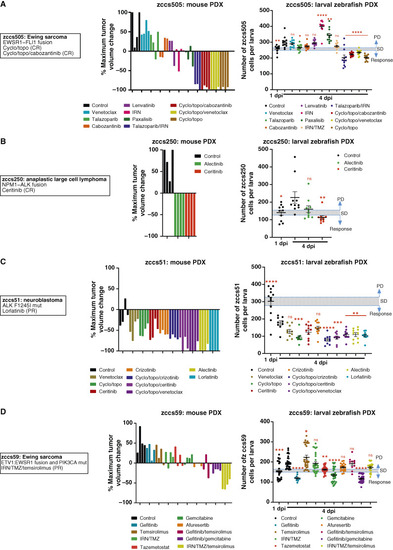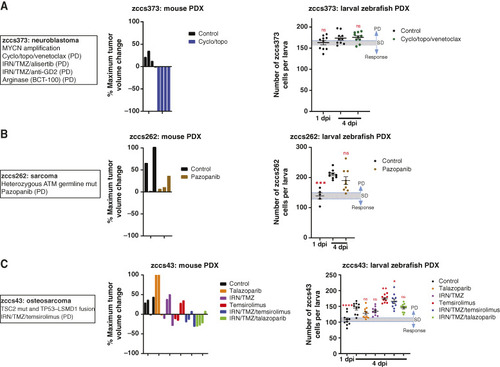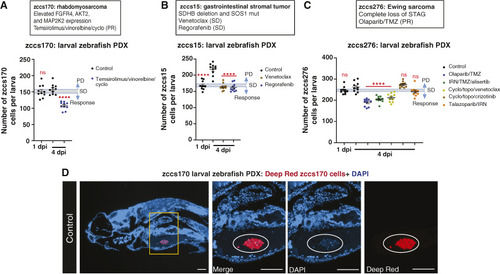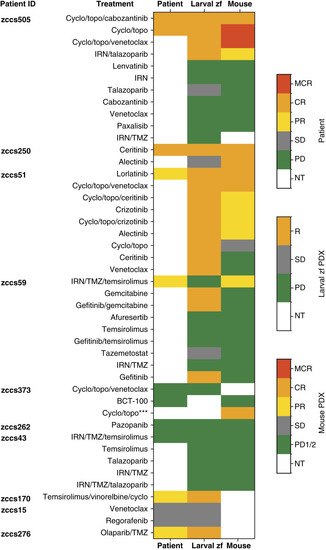- Title
-
Modeling high-risk pediatric cancers in zebrafish to inform precision therapy
- Authors
- Azzam, N., Fletcher, J.I., Melong, N., Lau, L.M.S., Dolman, M.E.M., Mao, J., Tax, G., Cadiz, R., Tuzi, L., Kamili, A., Dumevska, B., Xie, J., Chan, J.A., Senger, D.L., Grover, S.A., Malkin, D., Haber, M., Berman, J.N.
- Source
- Full text @ Cancer Res Commun
|
Overview of study design. |
|
Mouse and larval zebrafish PDX drug efficacy for responsive patients. |
|
Mouse and larval zebrafish PDX drug efficacy for nonresponsive patients. |
|
Larval zebrafish drug efficacy studies for patients with no available mouse PDX. |
|
Consistency in drug response between patients and their cognate larval zebrafish and mouse PDX models. Evaluable response to therapy was compared for each patient and their cognate larval zebrafish PDX and mouse PDX models. Patient and mouse responses are indicated as OR criteria. Larval zebrafish PDX models are indicated as response (inhibition of cell growth), SD (cell number maintained), or PD (cell growth in the presence of drug). Maintained CR, CR, and PR for patient and mouse are considered equivalent to R (response) in the larval zebrafish model. The concordance of response for each model type with patient response is summarized in the legends on the right. ***For zccs373 (nonresponder to triple combination), mouse PDX responded to dual combination. MCR, maintained complete response; NT, not treated; zf, zebrafish. |

